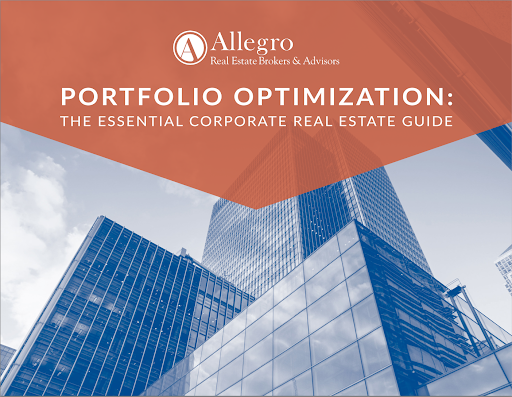Negotiating a commercial lease is rarely straightforward. After all, your lease terms play a profound role in how your business operates throughout the lease’s duration. Successfully negotiating lease terms looks different from organization to organization. However, every tenant would benefit from free rent.
During negotiations, tenants have the opportunity to ask landlords for a period, or several periods, of free rent. This means that you may occupy and operate out of the building during a defined period without paying rent.
Similar, but slightly different, is rent abatement. Rather than negotiating rent abatement at the start of a lease agreement, tenants typically seek this type of free rent during unprecedented periods of hardship for the business. For example, many businesses experiencing difficulties during the COVID-19 pandemic negotiated rent abatement for temporary relief.
In this post, we’re primarily focusing on the benefits of free rent and ways to strategically leverage it during the initial stages of your lease negotiations.
Why Would a Landlord Offer Free Rent?
It may sound odd that a landlord would provide tenants rent-free space. However, there are a few reasons offering free rent to tenants is in a landlord’s best interest.
First, vacancy is expensive for landlords—it costs both money and time to find a new tenant. Landlords also understand that, if a tenant’s business is successful, they likely won’t have any issues receiving rent payments once the free rent period is over.
Second, many landlords offer a free rent period when negotiating lease terms in lieu of negotiating down monthly payments, which lowers the property’s value. To attract tenants (and to maintain property values), they can simply offer a few months of free rent as an inducement, or concession, when negotiating a commercial lease.
Third, instead of coming out of pocket for a portion of tenant improvements, a landlord may provide free rent to induce the tenant to pay a portion of construction costs. Landlords are motivated to use this tactic when they are capital constrained.
While free rent has its benefits for landlords, it also yields several benefits to tenants.
Benefits of Negotiating Free Rent for the Tenant
There are a variety of reasons that tenants, with the guidance of a real estate broker, should consider negotiating free rent into a commercial lease agreement.
- It helps offset moving costs and tenant improvement costs. Money spent to move equipment, relocate employees, and generally set up your new space can all be alleviated during a free rent period.
- It lowers tenants’ net occupancy costs. Occupancy costs include rent, taxes, insurance, depreciation, and amortization expenses. A brief period of free rent will reduce these overall costs for you as a tenant.
- It gives your business time to build back cash reserves. As a business, the more cash you have on hand, the longer you have to become a profitable company. A period of free rent allows you to build operating capital back up to order more inventory or update your space as needed.
So, how do you go about negotiating free rent into your lease agreement? Here are a few helpful strategies.
5 Strategies to Negotiate Free Rent
Negotiating free rent should always occur in the very first round of negotiations with the request for proposal. Any later, and the window of opportunity may close. The tenant or landlord may negotiate for free rent all at once, at a reduced rate for a period or time, or spread out intermittently across the lease term. Consult with your real estate broker before pursuing any of the following strategies.
1. Conduct Comparable Market Research
If other properties are offering tenants free rent, leverage this during negotiations. Reach out to your real estate advisor for this information; experienced advisors know how much free rent is being offered elsewhere in the market.
2. Get a Tenant Improvement Allowance
Tenants typically negotiate a specific budget, called a tenant improvement allowance (TIA), allocated towards building improvements. Quite regularly, expert advisors will try to convert unused portions of the allowance into free or reduced rent.
3. Negotiate An Early Occupancy Period
An early occupancy period grants you access to the property before the lease’s official start date. During this time, you can set up telecommunications cabling, and/or other equipment and get ready for production without worrying about the cost of rent or utilities.
4. Ask For More Free Rent Than You Need
If you want three months of free rent, don’t ask for three; ask for four or five. It’s common for landlords to negotiate down the amount of time you initially ask for, so it’s best to start higher than needed. Ultimately, refer to your real estate advisor for guidance on the duration of the free rent period and the negotiating styles of each landlord you’re dealing with.
5. Agree To a Longer Lease Period
Usually, free rent periods aren’t technically “free.” If you’re granted three months of free rent at the beginning of a five-year lease term, you will quite often be asked to extend the lease agreement to five years and three months to cover the initial unpaid term.
It is in both your and your landlord’s best interests to discuss free rent when negotiating a commercial lease. Remember, too, that rent abatement may be an option during your lease agreement if your company needs temporary financial relief.
Get Commercial Real Estate Resources Straight to Your Inbox
Our blog features frequent content, straight from our commercial real estate experts. Subscribe to receive weekly content right in your inbox, on topics like advice and opinions on the state of the industry, market reports, and updates about the Allegro team.







